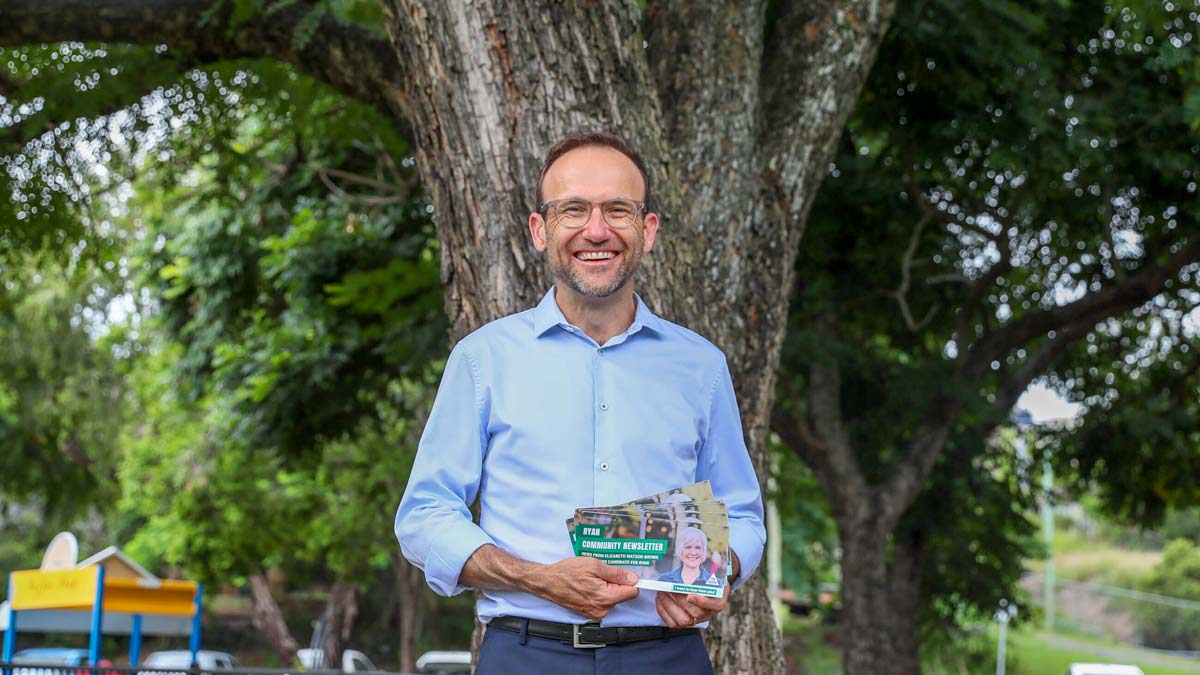The Australian Greens would task a new publicly owned utility with overhauling Australia’s electricity grid, as part of a plan to phase out the use of coal and gas, and boost Australia’s emerging renewable energy and hydrogen exports industries.
Under the $25 billion plan, the Greens would establish a publicly owned “FutureGrid” agency, which would be responsible for making direct investments in new transmission network infrastructure and facilitating the creation of dedicated Renewable Energy Zones.
Australian Greens leader Adam Bandt, whose party could hold the balance of power in the Senate after the next election, unveiled the plan on Friday, saying it had been inspired by the Australian Energy Market Operator’s ambitious ‘hydrogen superpower’ scenario for the Australian energy system.
That hydrogen superpower envisages all coal generation ending within a decade, and is what many anticipate will replace the current “step change” scenario (which envisages all brown coal generation to end but 2032) as the central planning model for the grid.
“The people running our energy grid have given us the plan to make Australia a renewable energy superpower,” Bandt said. “Government just needs to get on and build it, and if we simply leave it all to big energy corporations, the energy shift won’t happen in time.”
Following the ‘hydrogen superpower’ scenario would see Australia significantly ramp up the amount of renewable electricity it produces – amassing more than 550GW of generation capacity from wind and solar projects – which would then be used to produce zero emissions goods like steel, hydrogen and ammonia.
Australia would become a leading global exporter of zero emissions energy – replacing its status as one of the world’s largest fossil fuel exporters – while also establishing itself as a major supplier of zero emissions metals and chemicals.
“Over the coming decades, the electricity grid will need to undergo dramatic change. In the past, the grid has been designed to move power from a small number of large generators to load centres in large cities or big industrial facilities,” the Greens’ plan says.
“The grid of the future is smarter, able to monitor, communicate and manage in real time individual households and businesses electricity loads and generation.”
The Greens envision FutureGrid also leading the potential development of cross-continent interconnectors – such as the Australia to Singapore link currently being considered by the Sun Cable venture.
Bandt said that it was critical that governments play a direct role in constructing Australia’s new energy system.
“Government investment was integral in setting up fossil fuel exports from Australia. Now that the world has agreed to transition out of those fuels, we must ready Australia to take advantage of our incredible renewable energy potential,” Bandt said.
“FutureGrid will also begin the work of reversing the years of failed electricity network privatisation, beginning by buying back the critical interconnectors that connect up our state electricity grids.”
The Greens said the plan had been fully costed by the Parliamentary Budget Office, which found the plan would have a negligible overall impact on the federal budget, with FutureGrid generating dividends from its network investments that would ultimately be returned to the government.
The investment would be made through an initial $10 billion capital injection into the FutureGrid utility, with an additional $3.75 billion of capital provided annually over a subsequent four year period.
“FutureGrid will unleash the renewable energy and storage revolution our country needs to power beyond coal and gas,” Bandt said.
“To fight the climate crisis, we need to get out of coal and gas, which means connecting our renewable energy zones and readying Australia to export green power.”
“Building a new transmission backbone, which new solar, wind and storage can all connect to, is exactly the kind of thing governments are meant to do,” Bandt added.
The commitment follows earlier announcements from the Greens that it would provide a jobs guarantee for workers in Australia’s coal industry – providing an effective wage subsidy and guarantee for workers impacted by the transition away from coal.
The Greens also say that it would use the federal government-owned Snowy Hydro to make significant investments in renewable energy supplies – up to $40 billion – in new wind, solar and storage projects.
The Greens will be hoping to boost their presence in the federal parliament at the forthcoming election and leverage a potential balance-of-power position to enter into negotiations with the major parties over climate policies.
If the Greens can replicate their successes of the 2019 election, they will likely hold up to a dozen seats in the federal senate with two representatives from each of the states.
The Greens will also be looking to increase their presence in the House of Representatives, with Bandt currently holding the only Greens lower house seat, but could find themselves in competition with a growing number of ‘climate independents’ also looking to make their way into the federal parliament.










